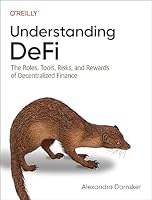
Advanced Credit Risk Analysis and Management
- Length: 448 pages
- Edition: 1
- Language: English
- Publisher: Wiley
- Publication Date: 2013-06-24
- ISBN-10: 1118604911
- ISBN-13: 9781118604915
- Sales Rank: #777639 (See Top 100 Books)
Advanced Credit Risk Analysis and Management (The Wiley Finance Series)
Credit is essential in the modern world and creates wealth, provided it is used wisely. The Global Credit Crisis during 2008/2009 has shown that sound understanding of underlying credit risk is crucial. If credit freezes, almost every activity in the economy is affected. The best way to utilize credit and get results is to understand credit risk.
Advanced Credit Risk Analysis and Management helps the reader to understand the various nuances of credit risk. It discusses various techniques to measure, analyze and manage credit risk for both lenders and borrowers. The book begins by defining what credit is and its advantages and disadvantages, the causes of credit risk, a brief historical overview of credit risk analysis and the strategic importance of credit risk in institutions that rely on claims or debtors. The book then details various techniques to study the entity level credit risks, including portfolio level credit risks.
Authored by a credit expert with two decades of experience in corporate finance and corporate credit risk, the book discusses the macroeconomic, industry and financial analysis for the study of credit risk. It covers credit risk grading and explains concepts including PD, EAD and LGD. It also highlights the distinction with equity risks and touches on credit risk pricing and the importance of credit risk in Basel Accords I, II and III. The two most common credit risks, project finance credit risk and working capital credit risk, are covered in detail with illustrations. The role of diversification and credit derivatives in credit portfolio management is considered. It also reflects on how the credit crisis develops in an economy by referring to the bubble formation. The book links with the 2008/2009 credit crisis and carries out an interesting discussion on how the credit crisis may have been avoided by following the fundamentals or principles of credit risk analysis and management.
The book is essential for both lenders and borrowers. Containing case studies adapted from real life examples and exercises, this important text is practical, topical and challenging. It is useful for a wide spectrum of academics and practitioners in credit risk and anyone interested in commercial and corporate credit and related products.
Table of Contents
PART I INTRODUCTION
1 Credit Basics 3
2 Essentials of Credit Risk Analysis 15
3 Credit Risk Management 27
PART II FIRM (OR) OBLIGOR CREDIT RISK
4 Fundamental Firm/Obligor-Level Risks 37
5 External Risks 43
6 Industry Risks 61
7 Entity-Level Risks 79
8 Financial Risks 99
9 Integrated View of Firm-Level Risks 147
10 Credit Rating and Probability of Default 161
PART III CREDIT RISKS – PROJECT AND WORKING CAPITAL
11 Credit Risks in Project Finance 177
12 Credit Risks inWorking Capital 207
PART IV CREDIT PORTFOLIO RISKS
13 Credit Portfolio Fundamentals 241
14 Major Portfolio Risks 253
15 Firm Risks to Portfolio Risks and Capital Adequacy 265
16 Credit Risk and The Basel Accords 285
PART V PORTFOLIO RISK MITIGANTS
17 Credit Risk Diversification 305
18 Trading of Credit Assets 317
19 Credit Derivatives 323
PART VI CREDIT RISK PRICING
20 Pricing Basics 337
21 Pricing Methods 349
PART VII THE LAST LINE OF DEFENCE – SECURITY
22 Security Basics 359
23 Collaterals and Covenants 367
PART VIII CREDIT CRISIS
24 Road to Credit Crisis 381
25 2008 Credit Crisis 393







